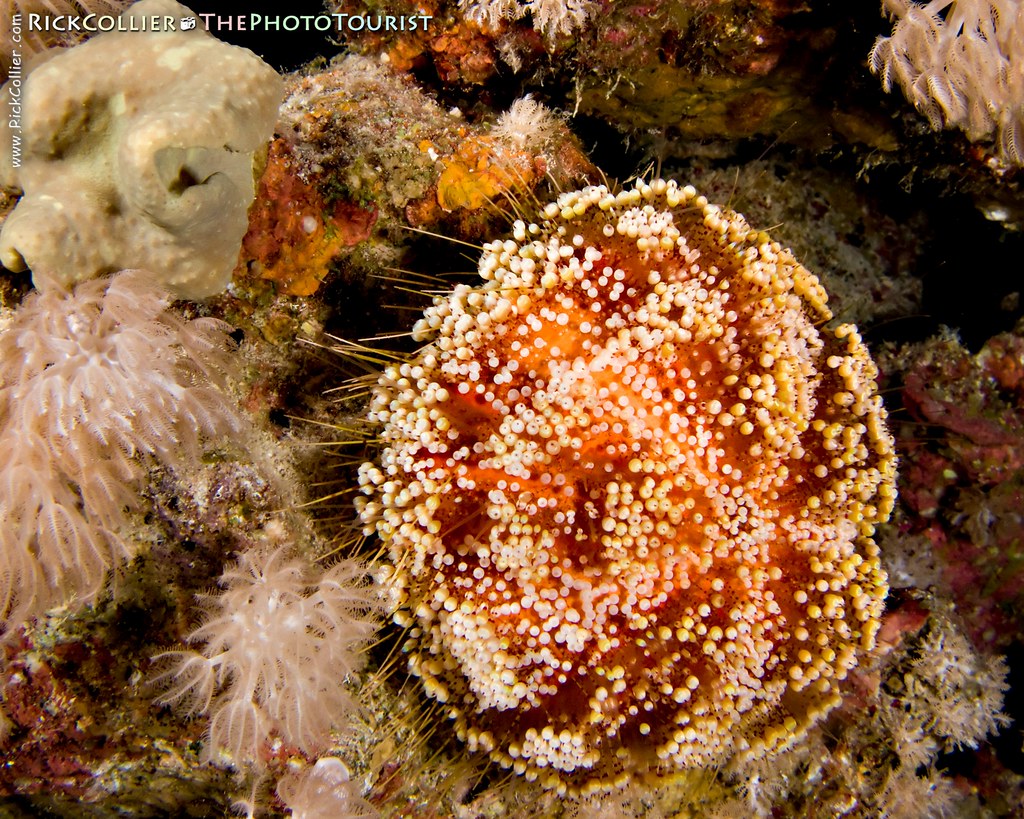- Home
- Categories
- Subscribe
- Contact
- Image Archive
- Search
-
Search
* Photo archive search opens a new tab or window
...or...
-
 Click here to share this image. |
Touring Egypt 34: Like all oceans, the Red Sea is full of sea urchins. Many people do not realize the sea urchin actually comes in many colors and forms. Some have long, thin spines, while others have short spines; stubby, pencil-shaped spines; or, sometimes, spines so short that they seem not to be there. This is the pincushion urchin. Pincushion urchins aren’t seen as often as more conventional “spiny” urchins. While they may be just as plentiful (I don’t actually know), they are easier to miss and mistake for a rock or shell when they are not moving during the day. (The spines on the other types of urchin make them a bit more noticeable as a danger to the hands and feet of passing divers.)
The sea urchin is a predatory animal related to starfish, sand dollars, and sea cucumbers. Its spines are articulated on joints, so that they can be pointed in any direction. The sea urchin moves by siphoning water through the hole on top of its dome-shaped shell and pumping the water through its tube feet, which have suction disks at the ends. These tentacle-like feet protrude in the five evenly-spaced, lighter-colored bands on the surface of the shell. They serve the urchin as legs, feet, grasping “hands”, and sensory organs.
Like many reef animals, urchins tend to be more mobile and hunt the reef at night. I came across this one moving quite actively across the reef during a night dive at the “Paradise” dive site in Sharm el-Sheikh. From this shot, it is easy to see that the urchin is moving on extended tubular “feet” to explore its surroundings and move around the reef.
(Canon PowerShot G9 in Ikelite case with two Ikelite DS-125 strobes, wired for TTL exposure. ISO 200, integrated lens at 9.9mm, f/5.6 at 1/60 sec.)
.
Pincushion is a post from: thePhotoTourist.com.
Images and text copyright © Rick Collier and thePhotoTourist. All rights reserved.